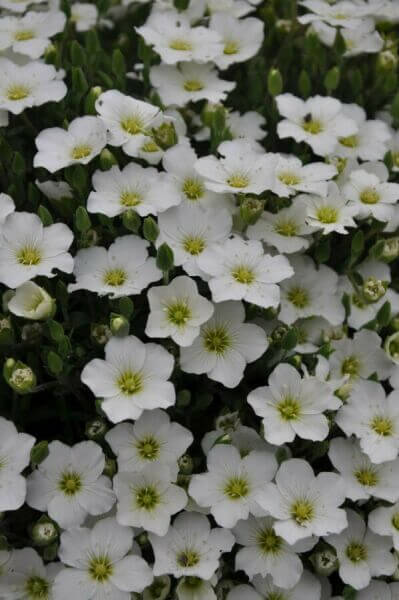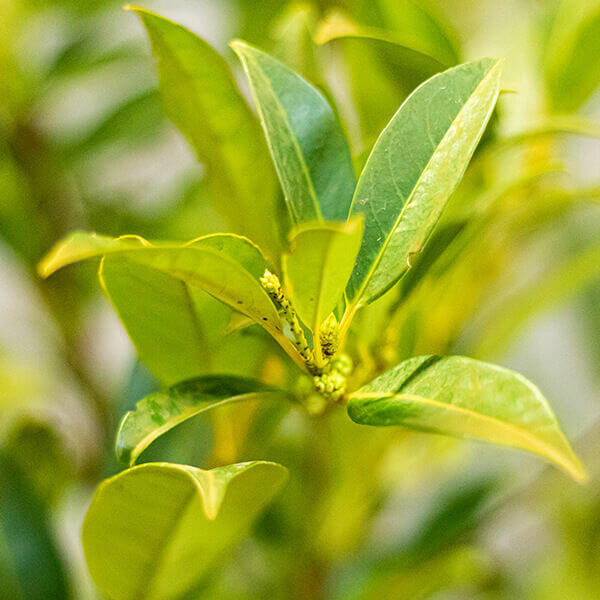Best Hedging Plants For Soft Borders
Best Hedging Plants For Soft Borders
Blog Article
Best Hedging Plants For Driveway Edges
Enhance your garden's allure with lush hedge ranges such as Yew (Taxus), Thuja, Laurel, Photinia, and Bamboo, celebrated for their structural stability and environmental advantages.
Yew and Thuja offer evergreen protection and winter strength, while Laurel provides quick growth and broad, aromatic leaves.
Photinia adds seasonal beauty with its vibrant red foliage, and Bamboo lends a low-maintenance, tranquil ambiance.
These hedges enhance air quality, reduce sound, and develop tranquil, private areas.
Correct planting, spacing, and maintenance guarantee energetic growth and eco-friendly consistency.
Check out how these lush varieties can raise your garden's appeal and well-being.
Key Takeaways
Change Your Garden With Lush Hedge Ranges
- Select Yew for its dense, evergreen growth and exceptional durability.
- Opt for Laurel for its fast growth and broad leaves, making sure fast personal privacy.
- Choose Photinia for its vibrant seasonal foliage, which turns a striking dark red.
- Use Bamboo for a low-maintenance, winter-hardy hedge with visual appeal.
- Area plants 2-3 per meter and prune frequently for optimum development and health.
Popular Hedge Plants
When changing a garden with lush hedge varieties, it's necessary to consider popular hedge plants such as Yew, Thuja, Laurel, and Photinia due to their special characteristics and benefits.
Yew (Taxus) is highly esteemed for its longevity and thick, green growth, making it a prime option for withstanding landscapes.
Thuja is noted for its evergreen foliage and robust winter durability.
Photinia adds seasonal vibrancy with red leaves that darken gradually, producing dynamic visual appeal.
Laurel uses quick development and aromatic, broad leaves, perfect for fast privacy.
Furthermore, Bamboo is an outstanding choice for ambiance, offering a low-maintenance, winter-hardy option that boosts the garden's visual with its stylish, swaying canes.
These selections deal with a range of horticultural needs and preferences.
Benefits of Garden Hedges
Garden hedges offer a plethora of advantages, making them a valuable addition to any landscape. These natural barriers are cost-effective to carry out and offer significant wind defense, improving air circulation and adding to noise decrease. The dense foliage of hedges like Thuja and Beech makes sure privacy by blocking exposure, developing a secluded and tranquil environment.
Hedges also play a vital role in microclimate guideline, providing a steady environment that fosters plant development and minimizes temperature variations. Their elaborate leaf structures filter toxins, improving air quality and contributing to a much healthier garden ecosystem.
Furthermore, hedges stand out in sound reduction, taking in and deflecting acoustic waves to lower ambient sound levels. This double performance of providing both visual and acoustic personal privacy boosts the overall serenity and visual appeal of any garden.
Planting and Upkeep Tips
For a successful hedge, precise preparation of the planting location is vital. Make sure the soil has appropriate pH and drain to support strong root advancement.
Space the plants appropriately for the chosen species. Water the hedge often during its initial growth phase, adjusting as required with seasonal modifications.
Carry out a methodical bug control and disease prevention strategy, utilizing chemical or organic treatments when needed. Routinely inspect for aphids, termites, and fungal infections.
Apply mulch to maintain wetness and suppress weeds. Seasonal pruning promotes thick development and air flow, necessary for plant health.
Following these guidelines will assist you cultivate a dynamic, well-maintained hedge that boosts the charm of your garden.
Spacing and Trimming Standards
Spacing and Trimming Guidelines
Proper spacing and trimming are vital for cultivating healthy, visually appealing hedges. Adequate spacing ensures each plant gets sufficient nutrients, light, and air flow.
Follow these guidelines for ideal hedge maintenance:
- Spacing: Position hedge plants 2-3 plants per meter to motivate robust development.
- Pruning Techniques: Regular pruning is necessary for preserving preferred hedge height and shape. Cut brand-new growth in summer and cut down older wood throughout winter.
- Seasonal Care: Adjust cutting schedules and approaches according to seasonal requirements to make sure plant health.
- Hedge Height: Routinely screen and cut to maintain the desired hedge height and accomplish uniform visual appeals.
Following these actions will ensure your hedge prospers, improving both the appeal and performance of your garden.
Selecting the Right Hedge
Picking the Right Hedge
Selecting the appropriate hedge includes evaluating aspects such as mature height, foliage density, and environmental durability. Effective hedge plant choice requires comprehending each types' growth characteristics and site-specific adaptability.
For instance, Yew (Taxus) offers exceptional longevity and thick development, while Thuja is significant for its winter strength. Additionally, thinking about upkeep requirements is vital; fast-growing species like Laurel or Privet demand regular trimming, whereas low-maintenance choices like Bamboo or Ivy may be more effective for those seeking minimal upkeep.
Environmental elements such as soil type, light accessibility, and moisture conditions must also guide the selection process. This careful approach ensures the chosen hedges will prosper, providing both functional and visual advantages to the garden landscape.
Delivery and Planting Suggestions
To ensure your hedge plants grow, they need to be provided by specialized couriers and planted without delay upon arrival.
Follow these necessary steps for effective planting:
- Soil Preparation: Improve the soil with raw material to improve drain and nutrient material.
- Planting Depth: Develop a trench twice the width and equal to the depth of the root ball.
- Watering Techniques: Water completely after planting, keeping the soil consistently wet but not filled.
- Mulching: Apply a layer of mulch to maintain moisture and reduce weeds.
Client Support and Service
Given the important function of prompt support in horticultural pursuits, our customer support group is available 6 days a week through telephone, e-mail, and social networks to offer professional advice and swiftly resolve any issues. Their dedication to fast action times makes sure customer satisfaction by solving inquiries connected to plant health, optimal planting techniques, and maintenance schedules.

Availability
-------------------
Within 24 hours
This detailed support system, strengthened by an excellent 9.3/ 10 client ranking, highlights our commitment to enhancing the gardening experience for every single client.
Frequently Asked Questions
How Long Does It Consider Hedge Plants to Establish?
Hedge plants generally require one to three years to become fully established, with the precise period varying by types and growing conditions.
Effective care throughout this critical period is vital for robust growth. Constant watering, watchful weed control, and proper fertilizer application are essential in promoting strong root development.
For instance, fast-growing types like Laurel may establish faster, while slower-growing varieties such as Yew might take longer. Diligent maintenance speeds up the establishment process, leading to dense and healthy hedges.
What Are the Finest Hedge Plants for Privacy?
The question of the very best hedge plants for privacy involves evaluating evergreen and deciduous choices.
Evergreen hedges like Thuja, Laurel, and Cypress provide year-round coverage, guaranteeing constant personal privacy.
On the other hand, deciduous hedges such as Beech offer seasonal privacy, shedding leaves in colder months.
Key maintenance ideas for personal privacy hedges consist of regular trimming, fertilizing in spring, and correct spacing-- usually 2 to 3 plants per meter.
Additionally, constant watering and diligent weed removal are important for promoting healthy, thick development.
Can Hedge Plants Draw In Wildlife to My Garden?
Yes, hedge plants can attract wildlife to your garden by offering vital benefits like shelter, food, and nesting websites, thereby enhancing local biodiversity. For example, yew, holly, and laurel are excellent for bring in birds, while ivy supports a range of insects.
Nevertheless, it is very important to keep in mind that there are some downsides, such as increased upkeep to handle bugs and routine maintenance. Thoroughly picking and preserving hedge ranges can help stabilize these advantages and disadvantages, eventually promoting a sustainable and dynamic environment in your garden.
Are There Any Flowering Hedge Plants Available?
Yes, there are flowering hedge plants offered that can enhance the appeal of your garden.
For example, Elaeagnus, also called Olive Willow, produces aromatic white flowers in the fall, adding a touch of elegance.
Photinia, another popular choice, showcases lively red leaves that grow into a rich green, developing a dynamic visual impact throughout the seasons.
To guarantee these plants thrive, it's necessary Additional info to practice proper pruning methods and seasonal upkeep, such as cutting new growth in the summer and cutting down in the winter season.
These measures will help preserve the health and aesthetic appeal of your blooming hedges.
How Do I Avoid Pests in My Hedge Plants?
To prevent pests in hedge plants, use natural insect control approaches and keep correct hedge care. Present helpful pests like ladybugs, which prey on harmful bugs, to produce a balanced environment.
Routinely inspect your hedges for indications of infestation and without delay eliminate any affected parts to avoid the spread. Ensure the health of your hedges by using well balanced fertilizers and offering adequate water.
Use mulching to keep soil wetness and appropriate spacing to lower plant stress and promote robust development. These practices collectively assist in lessening insect concerns and keeping a healthy hedge.
Conclusion
In essence, selecting the right hedge varieties such as Yew, Thuja, and Laurel can change any garden into a relaxing haven. These plants provide year-round plant, improve aesthetic appeal, and deal practical benefits like sound reduction and wind protection.
Correct planting methods, accurate spacing, constant watering, and seasonal trimming are vital for optimum growth.
Reputable delivery services and skilled client assistance guarantee a seamless experience from purchase to planting, making it easier than ever to elevate your outside space.
Garden hedges use a wide range of advantages, making them a valuable addition to any landscape. These natural barriers are cost-effective to carry out and provide substantial wind protection, boosting air circulation and contributing to sound reduction. The dense foliage of hedges like Thuja and Beech makes sure privacy by blocking visibility, producing a serene and remote environment.

Pruning Techniques: Regular pruning is necessary for preserving desired hedge height and shape. Cut brand-new growth in summer season and cut back older wood throughout winter.
Report this page